Simple Fix to Make a Full Shoulder Turn
Struggle with making a full turn, even though your fit and flexible? Lacking the distance you know you deserve? Learn how to fix both in this live lesson!
all right so tell me a little bit about your game what's going on how can I help well hello from Atlanta you guys just have golf courses open lucky dog what's that you guys still have golf courses open we're still locked down here in Colorado I know I was hoping you come out this way I know you're gonna head out west once you can go out to the west coast I think west coast swing you're gonna do up towards Seattle and stuff but yeah been able to play some I've been doing the rotary swing down probably three or four years and thank you for all you've done what you're doing especially the bedroom it's great I feel like I'm getting it down still practicing did the boot camp where you did the anchor session when Chris I think was Chris was supposed to get married I believe yeah yeah and did that still work on that I just I have a struggle when I go out to the course I think I still fall back in the bad habits and I watched your training session with Jose I believe from Dubai yeah today and I think I have some of the same issues where when I get broken up a lot of times I want to I feel like I want to be the dragster fire from up here so it's a real transition issue of getting the weight back and when you demoed it where everything was coming here you're here where you basically held everything held everything then released it is where I struggle from going from the practice session over to the you know taking it to the course sure that's super common and nine times probably nine point nine times out of ten the reasoning for that is just not loading up the lower body correctly in the back swing and when we get over the ball it's so easy to you know kind of rip down the club kind of lock the lower body in place because we feel like we're going to have a better chance of making a good strike we kind of minimize movement and then we have nothing but our arms and hands and they kind of take over and that's what typically happens so the cool thing is fixing this is actually fun because then you start to feel a lot more athletic and powerful and relaxed and dynamic over the ball so if you have the same stuff going on as what Jose did I actually just did another lesson with just before you the same thing it's really common that people kind of overdo keeping their hips quiet and then they all of a sudden there's nothing else to move the club so this would be a really easy one to get you going on the right track and feel a million times better so if you want why don't I I'll have you make a couple swings I'll video them real quick and then we'll just take a quick look at them and I'll walk you through it and show you exactly what's going on you want to do a few front on and then down the line yeah I'll just video one face on and one down the line and that'll be perfect that'll be all we need and what are we doing a swing with the club yeah okay I'm ready go ahead yeah that's exactly what's going on all right do one down the line for me okay perfect yeah just like that yeah 100% all right so let me walk you through this give me one second I'll share my screen with you okay okay see this okay yes all right so first little thing that I'm going to notice one the stance is a little bit wide when the stance is wide I tend to believe that somebody's going to be pretty upper body dominant because they need that wide stance to keep them balanced okay so as you start to go back I see this left hand start to tighten up the left arm and shoulders start to kind of move right you see that little tiny little uh tension tension move that you can watch your left wrist actually tweak and tighten and rotate on the club there so now we know right away where that tension is already before you've even moved the club this one little frame of the shoulder hiking up and the left wrist rotating is letting me know that instantly you're putting a lot of tension into that left arm and so now when we go back the left knee never really moves so your lower body I'll step over here for just a second so what you're doing is exactly what I was saying like the lower body can't rotate can't look can't load you're not one the stance width makes it a little bit difficult but then you're also just kind of forcing it to stay locked in place and just moving the club more with the left arm and shoulder so what we're going to do is get you to free up and allow those hips to turn and it's going to be a complete game changer so but I just want you to see this because your left knee and I'm going to show you with my swing in just a second actually you can see my screen in the background there yes so at the top of my swing notice the difference in my left knee and your left knee can you see that okay I can make this bigger just a second but see how your left knee is kind of bowed out and it's out over your foot and my left knee has moved in well inside of my foot yeah and I'm going to show you how to do this properly in just a second but this is something where when you do this your lower body's got no chance of really loading correctly the back swing so then we've got the you know little head dive coming here because you're trying to shift your weight back over to the left side but you can only do it with kind of an upper body lunge at it and so you know your lower body isn't working the way we want it to and so it's all upper body swing stuff and this is what you know because you're very obviously super fit athletic we're going to change your swing completely just by getting your lower body to wake up here okay as you went back yeah just kind of locked in place the arms get deep the arms are going to get deep because you're moving them a lot right and then you get a little steep here because the little upper body dive yeah all right so now the fun part let's make you an athlete again let you be athletic with your swing so throw the club down for a second go ahead and step back there on your mat and I want you to forget golf I want you to narrow your stance just a little bit just not crazy yeah you can go a little bit wider than that perfect right there so now as you're going I'm going to have you do this I've been doing this with a lot of these online lessons lately just because it's a really easy way for me to get you to feel something without me being able to touch you and have my hands on you so now I want you to just go and move all your weight to your right foot and rotate like a baseball pitcher just let your left leg come all the way back see you did you shifted laterally yeah let it come around like you're going to look at the second baseman turn turn on that hip turn even more let your hip turn there you go that feels crazy to you in terms of how much you're letting your hip turn but do you feel how much more you're loaded up and coiling on that right hip socket compared to where you're just kind of like forcing yourself and you feel all this tension from here up now you're going to feel this tension really just from here down and this exaggeration then gives you the momentum and the feeling to shift back to the left neck there you go so now I'm not having to tell you to shift your weight or turn your hips or any of that stuff it just becomes more natural and obviously this is a big exaggeration right but this is what you need to feel at first when you're practicing at home you just kind of make these big moves to feel okay as I turn and I have a hundred percent of my weight on my right leg and then I have this coiled up move it moves and moving back over becomes very fluid and very athletic right now we're just going to make those moves a little bit smaller so as you come into your golf stance you're not going to pick your foot up but you're still going to feel that same coiling and rotation move on the right hip there you go now look at your left knee remember where I showed you my left knee was at the top there my back swing oh maybe you can see here so in your swing just a minute ago your left knee was like six inches further this way out over your foot it's got to get pulled in if I'm turning my hips if I'm letting myself turn there you go turn and pivot on that right hip socket then the knee comes in it's not that I'm buckling it in or pushing off of it it's just naturally turning in there you go now once you've got that use that to help you get back around to the left so you coil up going back and you uncoil coming down better again load on that right leg good one more time for me good now even there as you're doing this you're kind of wanting to get a little bow legged so you're letting the right knee kind of buckle out a little too much and again when you get lost on this just think about how you would do it on the baseball player you would just get all of this stuff pretty much yeah you wouldn't bow your foot out or your knee out right you just get it all on the line and the same thing with your left knee you wanted to kind of hold this out so it's not that your leg bows out this way going back it's that you're pivoting on this hip socket and this is pretty much it's going to turn a little bit but it's staying more in place there you go but let your hip turn get all that weight over there let your left knee come in and just relax there you go there you go so now think of the swing in terms of winding and unwinding you're coiling something and uncoiling it that's somewhat of an oversimplistic view of it but it's a good way of thinking about it because what you did there you know that the downswing transition starts with this whole left side right the left knee getting over the ankle the weight coming back over here and what you did earlier five minutes ago you were trying to kind of fabricate that you would kind of turn back and then you would try to sit and make this kind of like these disjointed moves and what you did there as you let this knee naturally come in it naturally wants to go back to where it started because you're using these muscles in such a way that they're stretching and then they naturally want to go the other way that's what i want you to feel is that this natural rotation and unwinding is way more fluid dynamic when you allow it to move freely okay try it again just let your left knee come in relaxed there you go and now just let it unwind there you go so then you don't have to think about like sitting into it and squatting into it so much because you already know how to do these moves it's just making it natural and athletic now so now as you're doing this you can feel how your hips are moving your upper body through from the backswing and downswing they're initiating that move there you go good way better all right do that one more time i'm going to video one so you can take a look go ahead way better all right so now let's take a quick look at that all right so you're making a little bit of an exaggerated lateral move to the right see how your hips kind of sliding a little bit too much to the right okay so it's just a little exaggeration so instead of thinking so much lateral there it's more just you're going to feel more rotational okay but now notice how your left knee has come in a little bit more had you not slid to the right so much this would be spot on perfect they see how your knee is now inside of your foot kind of back toward where the ball would be yeah earlier it was way out here over your foot and you were kind of bow legged as soon as you don't have this lateral slide to the right and you just feel a little bit more rotational it's going to be perfect now you have a nice big turn and now watch the left knee see how it moves pretty freely athletically over to the left you post up and we're golden so now by just freeing everything up a little bit your legs are able to initiate the downswing and your shoulders are chilling out they're just kind of following along for the ride and if you compare that to what we were doing a moment ago now you may here you're making 20 degrees less turn right yes so now we've cut off a lot of power you're making your lower body you can see that you're kind of bow legged here left knee way out over the foot and we can't make very big turn now you can make a huge turn effortlessly and now that's going to allow you to unwind correctly down swing so now you can see the big difference from that okay nice freed up turn now look at the difference in your shoulder turn right and then coming down it just looks nice and fluid and athletic so so i want to remove that little lateral bump or the little lateral slide so i know you're just trying to kind of exaggerate stuff to feel it but we don't want to make this big move to the right it's more you're just going to feel like your your stance a little bit narrower and you're just rotating on that hip socket getting more weight loading into that right side there you go better there you go good do it again getting there make sure that you load so there's a balance point between staying too centered and moving off that right hip line and moving too far laterally and sliding past that right hip line so we'll go back and practice later just put a chair or a countertop or something up against that right hip and just feel loading into it and then you'll instantly know you'll have that feedback it's a little tough to do when you're just kind of watching yourself live here yeah that'll be the piece to get it all dialed in so just try and feel that you're loading into that right side but you're not sliding laterally there you go good there you go good yeah let the left knee come in just load and let it turn relax this side let it get moved in there you go good and now use those hips to unwind you coming down good good one thing so two things i'd like for you to work on and these are both back screen related but also this second one will help you in the downswing so the first thing that right hip line having a chair or something anything that you can put up against your right hip will help you feel powerfully loading up and coiling into that right side but at the same point i want you to do the wall drill so you can put your head up against the wall this this will be more for helping you in the downswing but it'll help you in the backswing too your head's moving wants to move a little bit off but as you're going down you have a tendency to kind of want to do this to kind of move over to the left once you get the feeling of this staying center and your head staying back instead of doing this then you've got the whole the whole core of everything licked okay good on the backswing there you go good so even there now you did perfect your head stayed perfectly centered you came down really nice from here just stay back and let the club release don't try to let your head and everything move toward the the target it's your hips moving everything and you're just letting the club release okay good there you go good much better you're feeling it more in your lower body now yeah so that's going to be your focus for the entire golf swing is is focusing on loading properly in the backswing feeling that right hip that right glute make sure that you don't feel it a ton in the quad you have a tendency when you're first watching to kind of squat down make sure that as you go back you feel like like you would as a pitcher that the quad is not doing a ton of work it's more into that glute that you're feeling yeah so then as you're doing that it's just coming letting everything shift back down and release okay the lower body initiating it which you did really well i didn't have to tell you like okay shift back to the left you're doing it naturally because you're loading up properly in the backswing so if you put the wall drill and the right hip line drill together that's really what you need to focus on and the only thing you have to do from there is just start turning in the backswing without moving your arms somewhere without trying to move the club whereas what you're used to right now is because you couldn't use this you had to kind of pick your club up and your arms up lower body's kind of stuck now you're going to get the feeling of this much more wide relaxed arm swing good yeah just letting them get moved and relaxing and they're going to feel slow coming down whereas before you know you had to fire with some speed to get anything out of it and that of course caused you to lose lag it caused you to not get good contact now it's going to feel like kind of like a more big wide relaxed swing compared to what you're used to does that make sense let's go for just a second i want to watch you make a couple practice swings but doing this with the club so that i can kind of see i give you a couple little tweaks to help you focus on what you're going to need to feel when you're actually making swings later on with hitting balls and with the club okay you said use the club yeah i want you to use the club i don't care where the arms and hands go so much right now my goal for you is to feel loading up in your hips and unwinding the downswing and feeling like you don't do anything right now with your arms and hands club okay so so same focus you're still thinking about the same stuff okay okay so now immediately your left knee went back forward yeah it's normal this is why i want you to see this and i'll record a couple so you can see it but i want your brain to be 100 focused on just your lower body right now the club just goes where it goes okay get that weight over to the right side you're kind of hanging on the left let your hips turn but that's better keep turning there you go so you're moving your arms a lot and your hips not enough okay let me show you what that looks like real quick and then we're gonna i'm gonna give you a plan to work through this so notice this was your first swing you see how your left knee is still out over the foot and your weight's kind of hanging on the left side this happens because you became focused on your arms and club normal right yeah so you lost that nice hip turn and that weight shift to the right and you can see you're kind of hanging on the left side left knee's barely moving oh you tried to get it there you see how the left knee moved in more there and then you got look at the difference in your shoulder turn you picked up another 20 degrees of shoulder rotation because you allowed that left knee to come in this is where we get our speed and our powers from our we have to let those hips turn at least you know 40 45 degrees going back there now we've got a nice big turn but you see your arms are still that right elbow is kind of flying back behind you because you're used to having to move your arms a lot to get anything out of your swing that when you get the feeling of this it's going to be like my arms aren't moving at all is exactly what you're going to feel so let me show you how to work on this the best way to do this we know that if you just have your you don't have a club and you're just kind of focusing on your lower body you can do it just right right we've seen it on video there's no question about so at first when you're practicing you're going to do reps without your arms as soon as you kind of get your arms into it it's really easy to lose focus on your core and your hips so first you know you're practicing every day and you're just kind of getting the feeling of loading this right leg even if you need to exaggerate it to get this feeling of coiling again let that foot come up totally okay and then you're just kind of starting to minimize it getting used to getting everything turning without arms then we can add that left arm and just kind of let it swing kind of floppy right now you're not trying to move it you're just trying to move this so that this if i move this my arms got to go with it right so they're going together and then i'm going to start getting the feeling of how my arm gets swung by my body rather than you trying to kind of pick your arms up then slowly add the right arm same thing all right you can do it the normal sequence that we do everything else on the site which is you're going to do your body rotation with no arms left arm only club and then at the end the right arm so what i would do next turn focusing on my lower body and then slowly add that right arm in there go through that exact same sequence when you're practicing this so that you get out of the habit of your arms being tight remember i showed you right away when you grab the club and you right before you started it back you cinched up on it we want to get all of that tension out of your arms and hands and shoulders and put it all down here but even tension is not the right word you're just kind of getting a dynamic load on those on those legs that make sense yeah as you start doing this your swing is going to start feeling way more relaxed from here up your arms are just going to feel really chilled out and relaxed and it's all going to be your brain's going to be down here okay so if you go through that sequence you do the wall drill right hip line just making sure that those movements are really good then as you start stacking pieces on you'll know when stuff falls apart so you saw right away we know that if you do it with you know even just your arms just kind of being flowing around your body your hips turn really well as soon as we pick the club up you kind of went back to this right so it's just important to work through it in that sequence and don't rush ahead you can move to the point where you're going to get comfortable you know in a day of just starting to be able to move with the club you're just going to relax your arms more if it takes a few more days of just doing body drill only that's fine as long just keep making sure the body drill is right that's the most important thing if everything down here is moving right then everything up here begins to be way easier to get dialed in because it's just doing way way less okay any questions so far anything else um i i know i think initially what i was trying to do i think the dead rule i was trying to keep chalking it you know where it was like push turn you know and i think that's what i was getting and i don't know why i was leaving this i think i was not letting it get here before i got to here to post and you know so part of that is just it's not i think the about today getting those hips to hear about the slide or just the loading the right glute with the rotation you know letting relax a little bit more you know to hear and then just letting the hips you know get it through i just like i said i've been i guess a little lazy with this loading the glutes and then using the hips because that's nice i was always doing the drag strip before the don't drop so you know i just have to get back to like you said and yeah even when i was doing what you just showed me it seemed like it was effortless you know it just seemed like it was more natural i didn't even have to put the effort into this one 100 that is exactly the result that you're going to find this what you just did or what we just kind of went through is the dead drill it's just taking the pauses out right yeah so the difference when you're learning this stuff at first i mean if you've seen like on our facebook group we've seen people posting videos like people getting to get the backsting right we see this stuff we see all kinds of crazy stuff so at first we just like all right let's just do this and get this right and then let's just do the transition to get this right because then we see all kinds of crazy stuff in transition so we start out at the lowest common denominator taking out all the extraneous moving parts but you're moving really well like you know that you need to shift you're not hanging back any of that stuff so what you need to do is learn how to make it all fluid and athletic so that when you start loading quickly and loading dynamically you feel that that transition becomes pretty natural but for a lot of golfers trust me it's anything but natural so but i can see i knew right away once i saw what you're doing i knew that i could get you to move pretty quickly just by moving fluidly just by loading up correctly so you don't need that pause the pause for you is for like the transition or stopping the backswing you you've got those moves so we don't need to worry about that i want you to do it with some pace and do it all together as one motion now you're going to start adding the club you may find that like for instance the transition might get a little bit off because you might go up here and then try to pull your arm down because that's kind of what you're used to doing firing with the right arm then you might kind of be like okay i just got to feel like i'm just doing this transition and letting my arm kind of fall and stay more relaxed and that might be a pause i do that sometimes you know i every golfer if they make a mistake pretty much every golfer on the planet that's a you know not playing at a high level they start taking the club over with their arms and hands and shoulders and so that's where that pause really comes in like oh gosh i didn't realize that i just kind of my lower body got lazy and i just kind of started firing with my arms and that's where you may go back and use a pause in the future to check a certain position or something like that but for you it's just loading unloading and it'll be very very natural for you as we already saw okay makes that now i think that's uh that's probably all the questions i had as far as again like i said uh it's it all makes sense it's just doing it you know sometimes i practice swing i i'm a looser and then like i said i get out like deep and there i'm on the course with a scorecard all of a sudden it's like you get back to work i just gotta hit it instead of just letting everything be fluid you know yeah and the whole fluidity thing is going to come from here down you can't be fluid with just your arms and hands because they're just going to fire like crazy they can move the club into all kinds of horrible positions that are irrecoverable from and then all of a sudden you're just chasing your tail chasing tips and things trying to fix something when really the answer is fixing the engine the car is fine we just got to fix the engine of it and once that's working at which we already saw that it is you just need a little bit of time to be able to to stack those pieces back in without start taking the club over taking the swing over back with your arms and hands and then and you got that's the whole thing yeah all right man what's that any questions any other questions i can answer for you before we wrap up no no i just um right now i got uh new clubs and i finished with a my strongest iron is a six iron and then i i used to play with a four and five hybrid and i just i have a three hybrid there's a gap and i know it's i'm just putting i'm kind of going out but putting the horse in front of the car but i was just wondering what your thoughts were on the in-between club would you go with more of a five iron we'd go with maybe a four five hybrid yeah so what you were doing before when you were firing your arms from the top and getting kind of a short swing it's going to force you to tend to be a little bit steep and so you'd find that those hybrids would help you get the ball up in the air a little bit more and be a little bit more forgiving once you start making more of a fluid sweeping swing instead of a armsy hit you'll find that you'll feel comfortable putting an iron back in the back you you obviously being fit and flexible and athletic excuse me you can generate a ton of speed you can generate enough speed to carry a three iron and get it up in the air once you start moving from here so i think that you'll find that once you start moving more naturally and athletically and quickly that those hybrids unless they're fit really well for you are going to be most hybrids that are sold to amateurs that you buy off the shelf are super spinning they put a crap ton of spin on the ball to try and get it to stay in the air and the more backspin it has the more forgiving it tends to be as well so because it's going to reduce some you know diversion off to the side because it's just going to keep climbing up in the air but long story short i think that you'll feel comfortable putting some irons back in the back here pretty soon okay um i said um yeah that was uh yeah oh um i know how i know your i know your feelings on training aids um i did i had in my possession for a year or two the speed sticks when the fundamentals are there what's your thoughts on speed sticks for training yeah as long as the problem is with those things like that that doesn't teach you anything right i mean you got to move you can just fire your arms and not move your body at all and it's still going to get the same result so there's nothing wrong with it if you're moving correctly i would tell you not necessarily going to give you any benefit either if you want to use it knock yourself out as long as you're moving correctly i couldn't care less really i just don't want people to get they get caught up in trying to hear a snap and then everybody will start trying to use their arms and hands to try and get it to release the same spot in the right spot yeah exactly and and it just teaches you to focus i my release is completely passive i mean i am literally i mean actually in this video you can see which is like just shot from the other day if you i don't know how well you can see the close-up of my hands but if you watch my right hand even at the top of my swing my right finger my forefinger is almost not even on the club okay it's literally just barely touching and then as i come down i'm hitting this with my leg actually my left leg if you watch my left leg is posting up this whole time yeah my right hand is barely on the club right there okay so i'm never trying to do anything with my hands i'm literally trying to do as little as humanly possible with my hands okay speed stick training aids inevitably lead to you trying to snap it with your hand and that's why i don't care for it but if you get out of that you know you're just trying to move your body to do it and you're feeling a post-up fine but i would say you don't need it well i noticed it you know when you've shown some of your videos through the years like your seminar your 200 yards it's like and i know you're not a big training aid person so it just tells me or reinforces that it's the fundamentals that are creating the club head speed like you said with the proper load and the release when you get to when you post up and release where you're if you're maintaining your angles your lag then to release it out then that's pretty much the speed you need to you know get good distance you know exactly and i don't do anything for speed i don't try and train my body to swing fast the last time i ever tried to swing really fast and like do something to hit it further was like 2007 that was the last time i actually did any program and it wasn't really a program it was literally hitting drivers for like four hours a day for three months that's literally all i did on a launch monitor and i was just testing a bunch of equipment and shafts and and seeing what i could get to hit the ball as far as like i was hitting the ball at 340 yards it was dumb but but i never have done anything like there's you know these i think there's these things called speed chains and things like that there's benefit obviously of teaching fast twitch muscle fibers to move quickly you move fast already you can move fast already it's not like you're a slot just kind of going really slow your fast twitch muscle fibers are going to fire it's just you're firing the wrong ones and so once you learn how to move fluidly my whole goal again with the swing is to move as slowly as humanly possible what i feel and get the maximum amount of speed the max amount of bang for the buck and so for me i i don't try to do anything i don't even try to get my students if i have somebody who's you know their whole life they've never done anything athletic and they've been super sedentary and they're just kind of they're naturally very slow moving getting them to learn to get those neural pathways to fire and engage those fast twitch muscle fibers that's something but that's a pretty rare circumstance i don't see that super often um somebody like you who's fit and athletic you don't need that stuff you just need to learn how to move correctly and that's it it makes the guys on the tour and most of these guys on the tour are not exactly athletes there's a lot of athletes out there now compared to what it was back in the day but but i'll take any of these guys one-on-one with basketball each day of the week no i i'm with you on that i agree 100 but um now are you shooting and stuff you're doing right now is that tell your life uh just outside of tell your right yeah we're in ridgeway but yeah about 45 videos i mean just the scenery i'm like wow is that pretty because i know you were doing court lane for a while too were you in that area yeah i was in court lane for gosh five years or so in the summers um bobbed it up there but colorado's always been home to me so we finally decided to come back and live here full-time and so that's our those are our mountain views out there is in that um or do you get back to orlando very much or do you just no i i hope to never go back to florida same way she's an orlando girl and i'm a fort lauderdale boy and like so we enjoyed the change of the season i mean where you are i uh i think utah is beautiful too but i know tell you about i've skied out there and i've skied kind of through the summit county area and all that and i do i don't have quite what you've been through with your neck i've done disc surgery but i haven't broken my back so i know a little bit as far as you know when i do work a lot on drills sometimes my neck gets a little tight but and i can loosen it back up and stuff but yeah all the videos you've been shooting i mean it's number one learning from you but look at the scenery it's like wow is that beautiful you know so i i we're in one of the most beautiful areas i've ever been at least in the united states for sure and the town closest to me called your ray it's o-u-r-a-y it's called the switzerland of america when you go there it's just it's crazy it's just about 10 miles from here so these are the mountains that are the backdrop for that town now do you have some do you have a good amount of land that you sit on right now because this is over your racetrack is yeah yeah i've got about 30 acres out here so the racetrack takes up about nine of that um just another miles like 19 turns it's it's awesome well that video you did was great oh thanks thanks about what we're talking about today right dynamically loading and letting it unload so i love i love when you said you're asking yourself what kind of a golf school has a racetrack and i think you said an awesome one or something like that i said so appreciate your sense of humor too chuck you've been a just a great teacher i've learned a lot and like you said i'll get this nailed down and um are you going to in the future are you going to do any clinics out of tell you right or are you going to still keep in orlando uh we're probably going to be moving more stuff out west we probably won't be doing any clinics anytime soon out uh on the east side but that's still kind of up in the air right now obviously this coronavirus has had a huge impact on on in-person stuff and so we're uh we're still kind of in flux but we're spending more time relying on trying to figure out how to deliver stuff as effectively as humanly possible online and that's the boot camps have been great for that i i it was great i i applied for delta airlines and i missed one of them what was cool as i could come back but i did as many as i could participate in and did the drills in between and uh it's it's great i just like said i've got so many years of bad habits and even through the reps i still want to like you said put a club my hand what do i do i go back to bull-legged and you know so i know i know your your uh philosophy on starting like this and you know i don't have an issue at all with practice i i practice more in my garage here in front of other than i do i don't really go to the range and get balls to pound balls i just try to work on you know fundamentals like you said start here add this add both you know and then so i'll just i'll go back to square one with them getting these hips to you know work a little better yeah you're going to make quick progress with this and once you get the feeling of just now you know exactly what to look for and you can go back and re-watch this uh this recording you should email of it if not let us know and i'll send you a copy do you mind if i share this with the members online because there's a lot of people who share the same stuff if not it's no problem learned a lot from that i think i've seen maybe two or three i'm not sure what i've seen so far online that you've posted great thank them for doing that too because like i said a lot of that guy yesterday i was like i've got that problem i've got that problem like you said common problems so well the good thing is common problems have easy solutions they're common solutions so if you just focus on the simple stuff it's not going to take me long to get you where you want to be i promise sounds good all right thanks so much








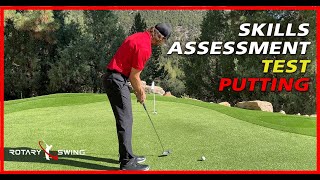


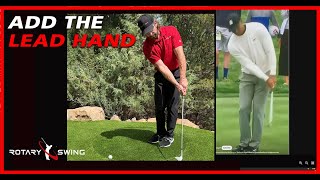


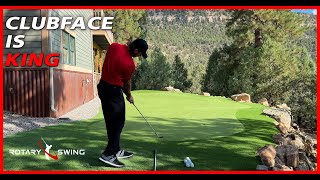








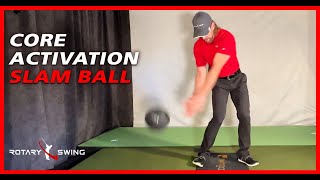





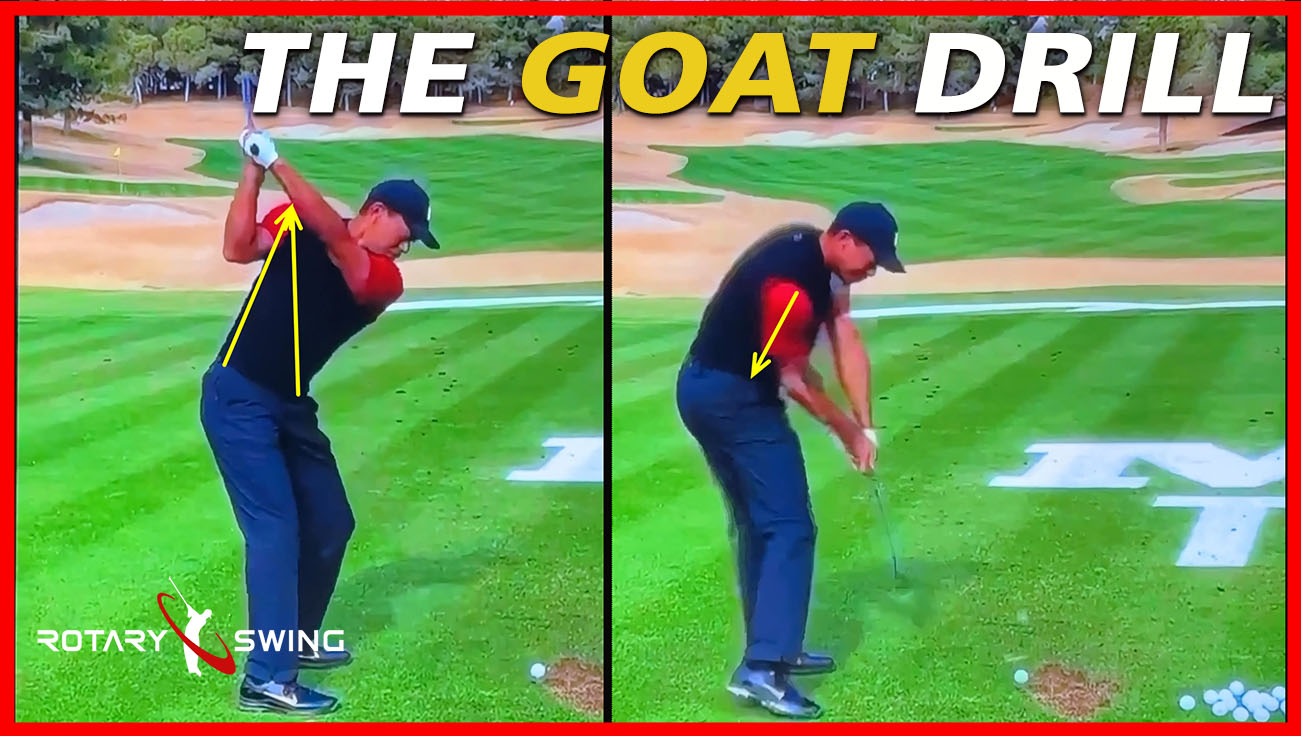


















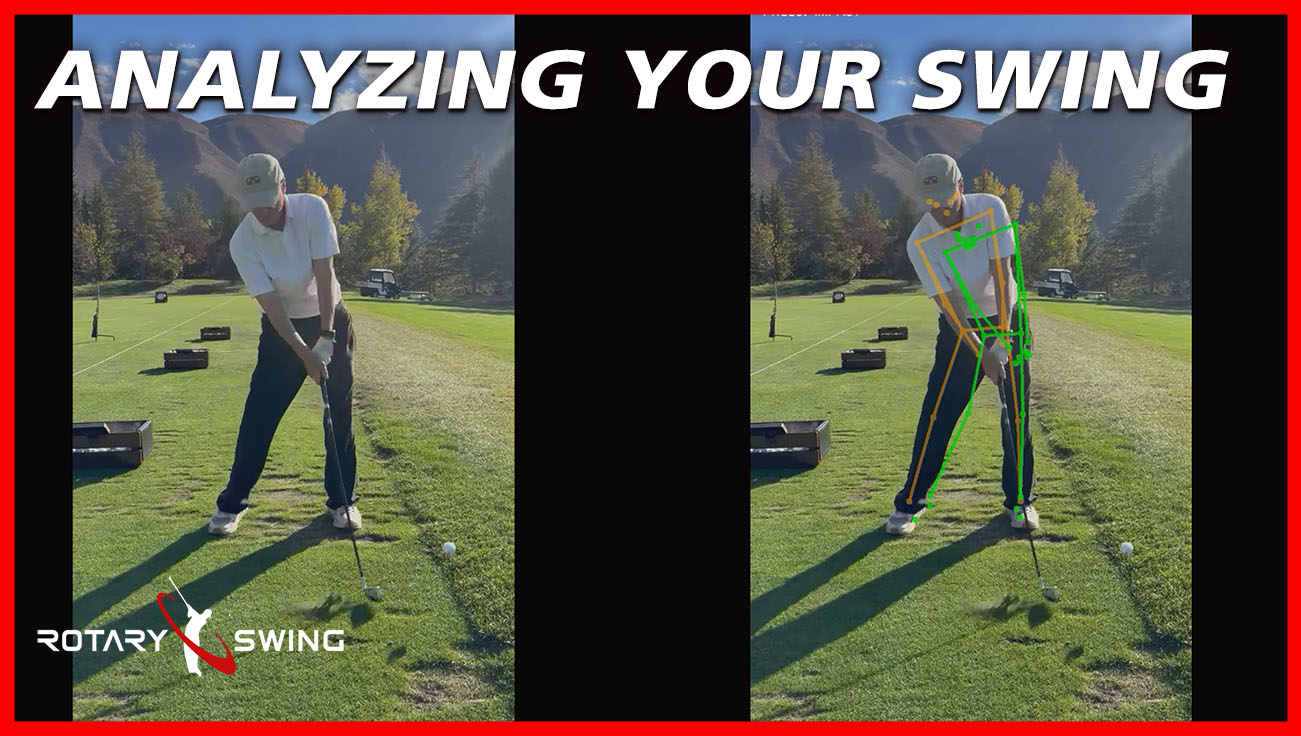









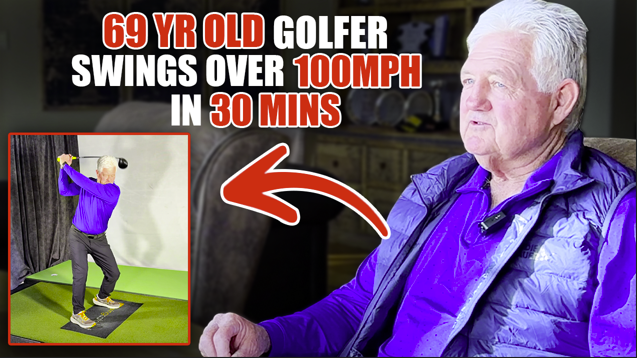
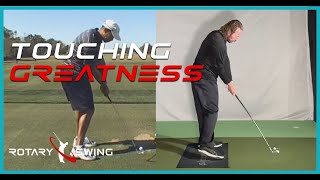

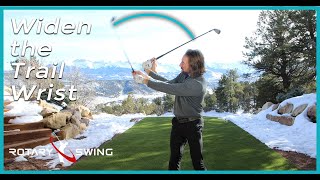



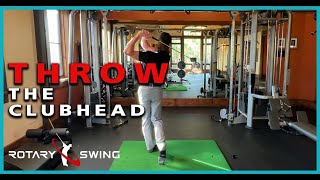







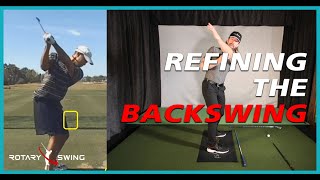







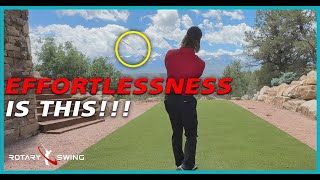
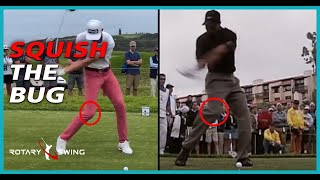
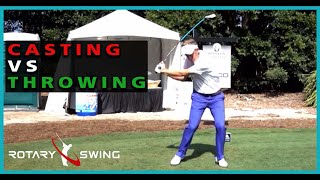



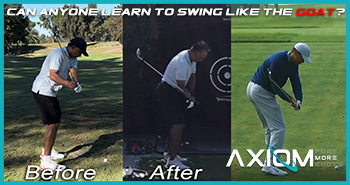


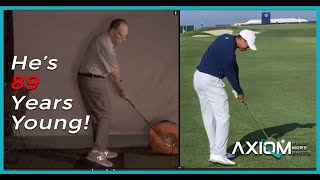



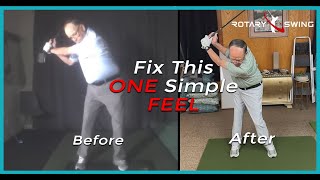











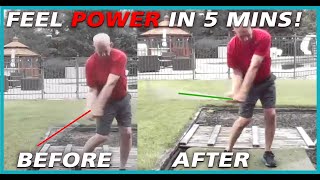


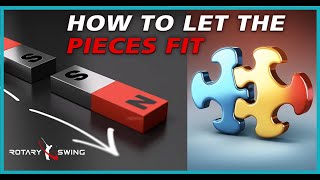

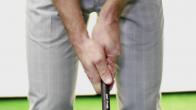




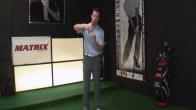













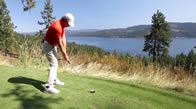



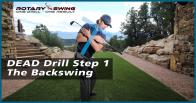

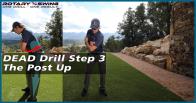










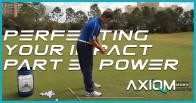











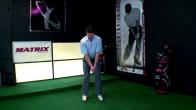



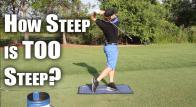


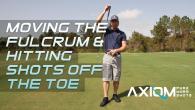



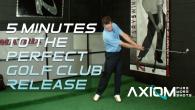

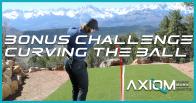






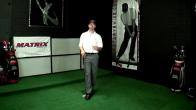









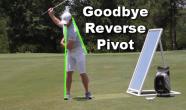





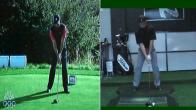



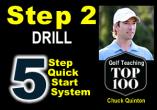






















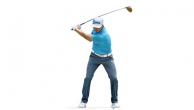
























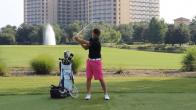








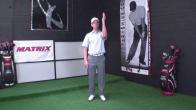




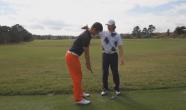





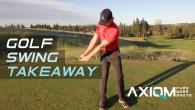









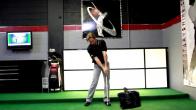



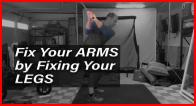


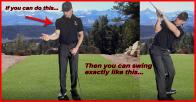




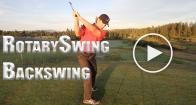

















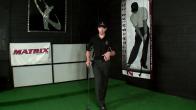





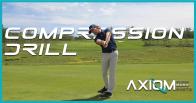
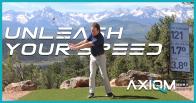
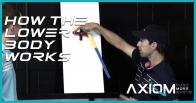












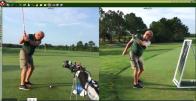






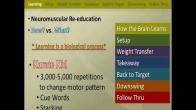
















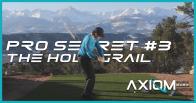

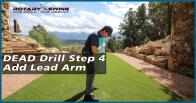


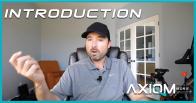

















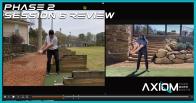







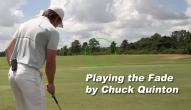











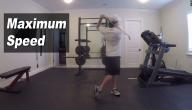

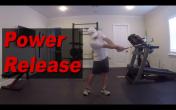
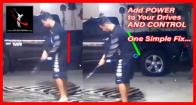


















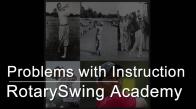



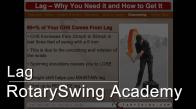



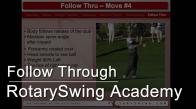






















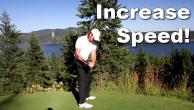



















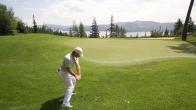





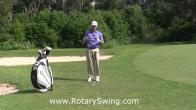



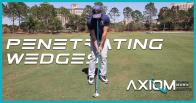







charles
Craig (Certified RST Instructor)
charles
Craig (Certified RST Instructor)
Alex
Craig (Certified RST Instructor)
Malcolm
Chris (Certified RST Instructor)
Robert
Chuck
Harry
Chuck
Bill
Chuck
Robert
Chuck
Alan
Chuck
Tony
Tony
Phil
Chuck
Phil
Tom
Craig (Certified RST Instructor)
James
Craig (Certified RST Instructor)
Roger
Craig (Certified RST Instructor)